Since its settlement in 1849, Provo has unfolded a rich history — one that has been celebrated and preserved by its residents.
Organizations like the Utah State Historical Society and the Utah Valley Historical Society act as liaisons between the past and present; collecting, maintaining, and researching Provo history, then sharing it with the community.
Robert Carter, who works with the Utah Valley Historical Society, said that history can help us find the reality of those before them.
“We all have our foibles and they did too — but they contributed to the steady progression of the city,” Carter said.
James Faulconer, who has lived in Provo for almost 50 years, said his life has been, for all intents and purposes, wrapped up in BYU. Faulconer started as a student in 1965, and went on to become a philosophy professor until he retired in 2022.
“I guess what’s surprising to me is how little I think things have changed,” Faulconer said.
Though time has necessitated upgrades, many landmarks and traditions have been conserved through generations and remain windows into Provo’s history.
Center Street


According to Carter, Center Street has stood as Provo’s commercial hub since the 1880’s, when many of its current buildings were constructed. Since then, the Princess theater — the leftmost building in the image on the left — has been demolished, leaving behind an empty space.
Carter said that for a building to be preserved, it requires a “viable use” that meets modern needs. Because of the rising popularity of shopping mall movie showings, the downtown theater became obsolete.
“If you can find a viable reason for it to be there, you can pretty well raise an argument for it,” Carter said. “But there has to be some kind of use, or it’s dead.”
The building next to it, named the historic Gates-Snow building, has been preserved since its construction. At one time, it promised “Billiards”; today it offers lunch and dinner as Enlighten Bakery and Cafe.
Provo City Library at Academy Square


The Provo City Library at Academy Square is a development of the 21st century — but before its dedication in 2001, the building acted as the setting for a variety of educational centers, tailoring itself to the needs of the community.
When it was first completed in 1892, the building housed Brigham Young Academy, the predecessor of Brigham Young University. Carter said that once the university moved to the current campus, the Academy building sat unused and deteriorating for almost 20 years.
Community members led the effort to save the building from being demolished, and eventually found a new function for it to fulfill: the community gathering space, cultural center and public library that stands today.
“I think the majority of people by far are very, very proud of it,” Carter said.
Utah County Historic Courthouse
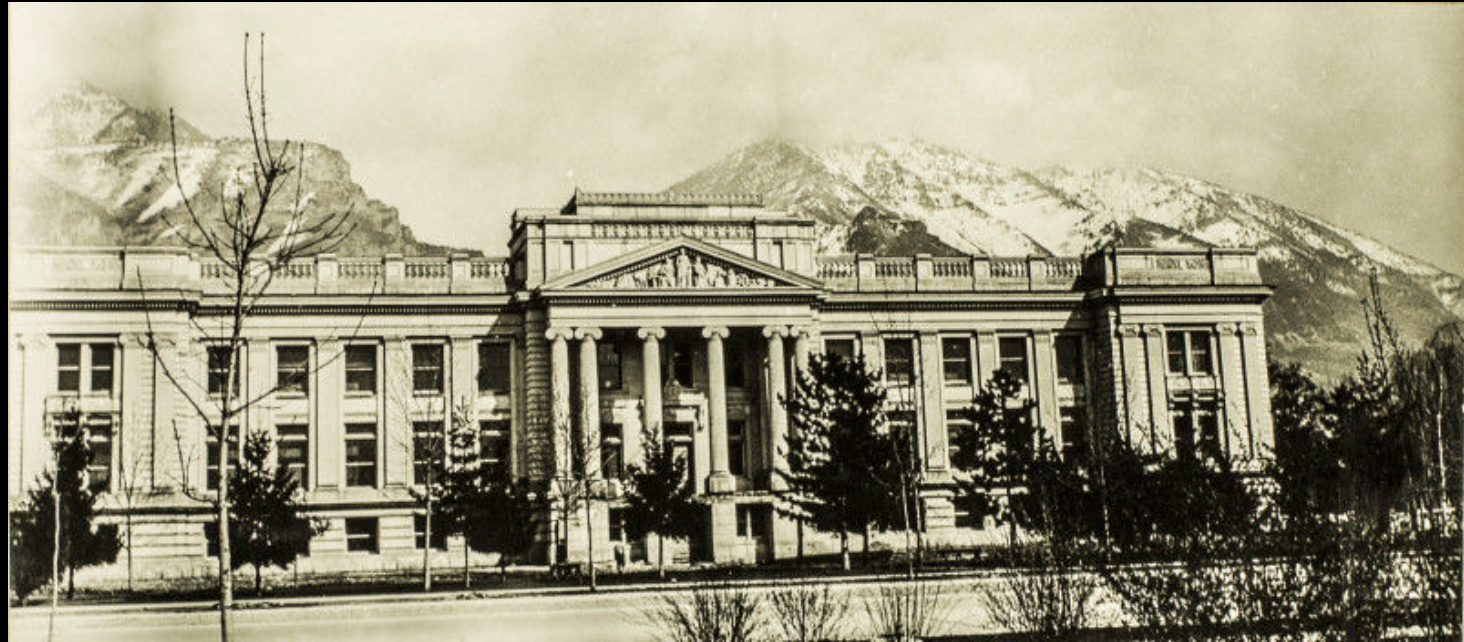

Almost directly across the street from the Provo temple is the Utah County Historic Courthouse, two of the most “significant” buildings in the county, according to Carter.
This courthouse completed construction in 1926 after the developing community had outgrown two other buildings.
“I’m glad they decided to save this one, too, because with the new county building and state building in back of it, it could have been just decided that it wasn’t needed anymore,” Carter said.
According to the Utah County Government, the historic courthouse acts as a monument honoring the people of Utah County whose industry made it possible.
Provo City Center Temple
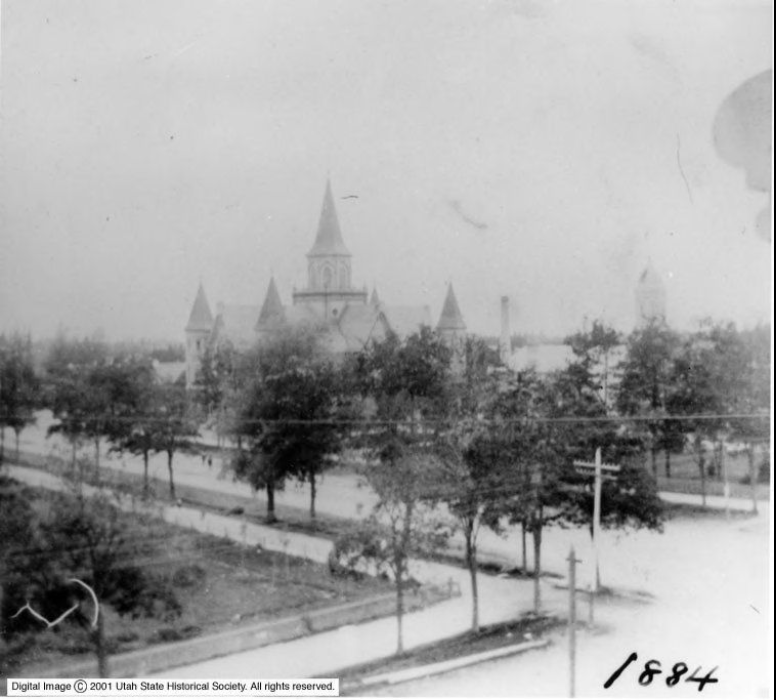

For the years before the Provo City Center Temple was erected, the Utah Stake Tabernacle building was open to the public. On December 17, 2010, just before 3 a.m., a 300 watt lamp that was not turned off after a dress rehearsal in the tabernacle, started a fire. The 1898 building went up in flames.
Five years later, the doors of the Provo City Center Temple opened for members of the Church, and looked “very similar” to the way the old Tabernacle did.
According to the Church’s historical account of the transition, the team constructing the temple used pictures and salvaged materials as design inspiration for the new structure.
BYU Football


BYU traces its football legacy back to the 19th century, which began with a small group of student athletes. The Brigham Young Academy football team won the regional championship in 1867.
Utah decided to ban football from all Church schools when 45 players died nationwide from a variety of injuries, until it was officially brought back in 1922.
Fastforward to today, BYU football holds one national title, 23 conference titles and a fanbase like no other. Kalani Sitake has been head coach since December 2015. The program has grown and evolved into an activity that students, alumni and residents love to support and watch.
Class Y-Photo
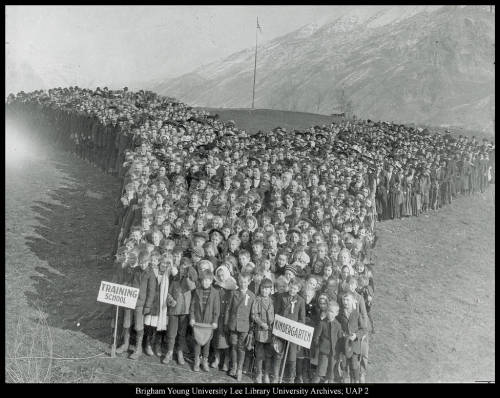

The Y is a well-known symbol among those in Provo. There are a few traditions associated with celebrating BYU and using the Y. Cory Nimer, BYU’s archivist, said the formation of the Y is practiced in multiple ways, such as incoming class photos and the homecoming “Hike the Y” event.
He said that in 1908, Brigham Young Academy students, faculty, and residents gathered in a “Y” formation to celebrate the dedication of Temple Hill — also known as the upper campus — prior to construction of the Maeser building.
Students continue to practice the formation of the Y in class photos taken each year at new student orientation, which takes place at the beginning of fall semester.
Another popular tradition Falcouner said he thinks is an important part of our history is the annual hike and lighting of the Y.
“The ways in which we cheer on our teams are all things we do to celebrate who we are,” Faulconer said.
True Blue Foam
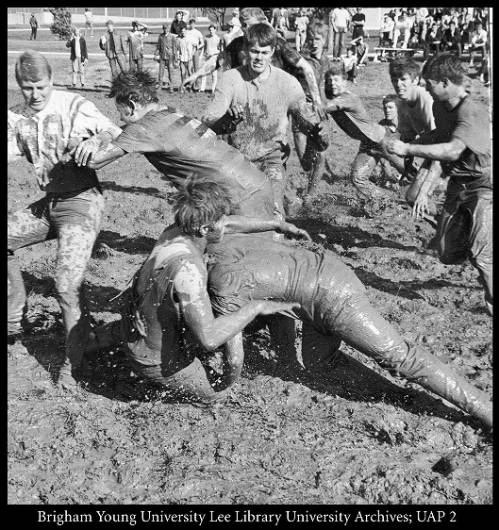
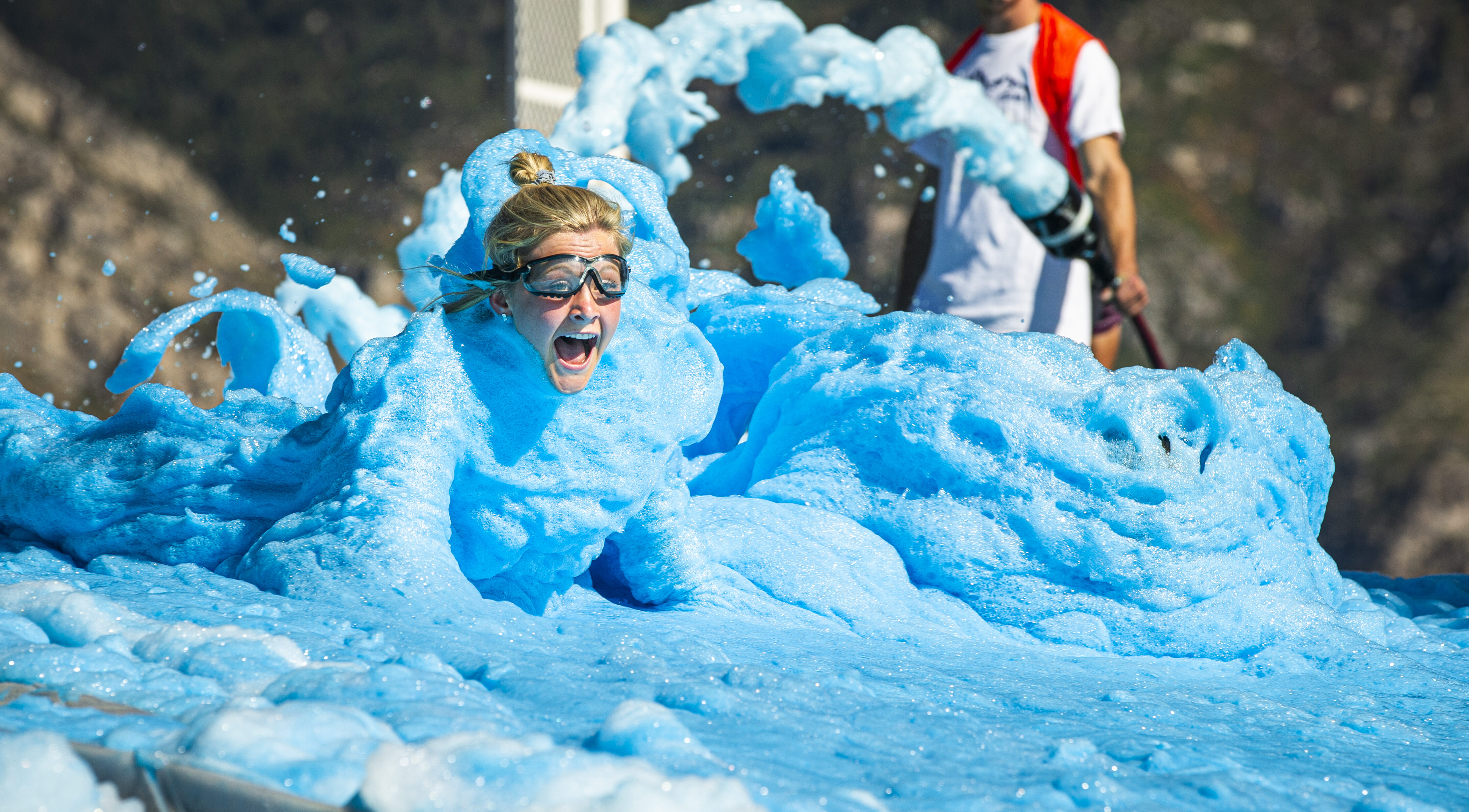
The homecoming spirit has always been an important aspect of BYU culture. This tradition started in the 1960s as the homecoming “Mud Bowl” with a group of students playing football in mud at Helaman fields. Overtime, BYU groundskeeping and staff decided to discontinue the game because of how it affected the grass. Soon after, it developed into a new tradition called True Blue Foam.
Maya Wolthius, BYUSA Activities president, helped coordinate and plan the event in 2022 and said it is a “highly anticipated activity,” especially for freshmen to kick off their first year at BYU.
“This just gets everyone hyped for the beginning of the semester and of course the big homecoming football game,” Wolthius said.
True Blue Foam takes place annually at Helaman Fields with about 4,000 students in attendance in recent years. Students slide down a huge slip-and-slide covered in blue foam to celebrate homecoming week at BYU.
Carter said that being studying and being mindful of history can give clarity on the people that shaped Provo’s present; all it takes is to “dig deep enough”.
“History can help us find out how they really were, if you dig deep enough. And they were just basically sort of like us,” Carter said.
Life undoubtedly looks different between Provo’s beginnings and today, but efforts to preserve history connect current residents to those of the past. People today conduct business in the same buildings, participate in the same traditions, and celebrate Provo in the same way as generations past.




